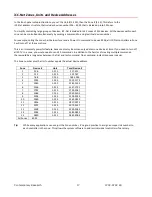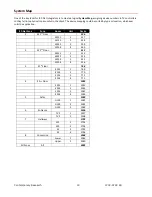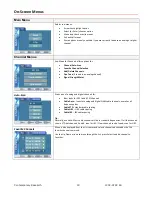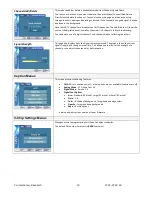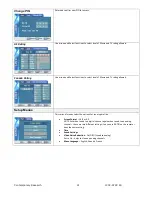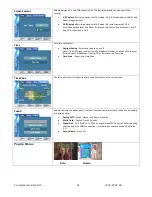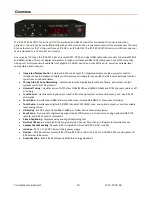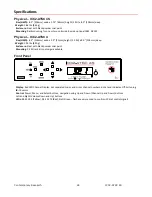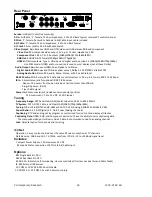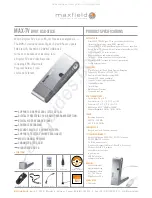
Contemporary Research 10
ICC2-ATSC 4S
iCC-Net Control Protocol
Overview
Control for over 4000 TV Controllers is provided through an ICE-HE Head-End Network Controller or ICE-HE DXL Display
Control Center that inserts a micro control channel through RF coax. The ICE-HE receives control commands via RS-232
and Telnet, and the ICE-HE-DXL adds a USB port.
Each TV Controller is assigned a unique device number from 257 to 4094. The devices are organized into 16 zones of 255
devices to handle large-scale TV installations. Al
l the devices in each zone will respond to a single “virtual device number”
—
one device number that represents all devices in each zone. There is also a global device number, 4095, that will
command all devices in the system. This feature dramatically speeds up system operation and programming, because one
command can affect an entire group of devices
—
or all. To take advantages of this feature, review the section
iCC-Net
Zones
following this section.
In Display Express, we reserve the first group of devices, 1-255 (for which there is no Zone), for components in special
applications. Zones 1-15 are used for CR TV Controllers.
The RS-232 port can communicate from 300 to 115.2K baud. The factory default setting is 19.2K baud, 8 data bits, no
parity, and 1 stop bit. IP commands can be sent via Telnet to IP port 2728. The USB port is typically used to provide RS-
232 control from a PC with Display Express software.
Command String Structure
Characters in command strings are expressed in a combination of hex and ASCII characters. For clarity, the following
protocol examples use the following conventions, similar to AMX protocol, most other control systems would use Hex.
•
Single-
byte hex numbers are preceded by the ‘$’ symbol
•
ASCII characters or strings are enclosed in single quotes
•
Numbers not marked as hex or ASCII are a single decimal byte
•
Parameters shown in < > brackets are single byte
•
A series of multiple commands or parameters are set apart by [ ] brackets
•
Commas separate the bytes, but are not part of the protocol
•
Double quotes enclose the command string, but are not part of the protocol
Command format:
“$A5,<dh>,<dl>,<ncb>,<cmd1>,<parameter> [<cmdN>]"
$A5
Starts the command
<dh>
The zone or high order byte of the device*
<dl>
The unit or low order byte of the device (0 for global zone)
<ncb>
The number of command bytes to follow, the (total bytes) shown after are simply reference
<cmd1>
The first command byte
<parameter>
Command
parameters (not used by all commands)
[<cmdN>]
Multiple commands can be concatenated, with byte count added to <ncb>
*
iCC-Net devices are arranged with a zone mindset. For example, a command sent to Device 256, which triggers all the
units in Zone 1, would be expressed as $A5, 1, 0 (first zone, device zero). A command sent to 257 would be $A5, 1, 1
(first zone, device 1 in the zone). See iCC-Net Zones following this section.

















